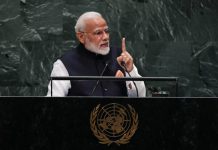To Profit or Not
Education, including higher education, has always been regarded as a charitable cause and not-for-profit activity. As the PWC study said, “Currently, only registered societies or trusts and, in certain cases, not-for-profit companies… are allowed to establish formal educational institutes.” This is the prime reason that the government gave tax exemptions to such institutes.
However, the not-for-profit position makes it difficult for recognised private players to recover their capital expenditure, forget about earning returns on it. The issue is complicated by the tangled mechanism of regulation, with multiple regulators at the central and state levels governing admission procedure, fees, the number of available seats, curriculum and operational standards in institutes that are approved by them.
The net result: many of the approved and recognised institutes have found innovative and partially legal ways to siphon off profits from their trusts and societies. In addition, there is a huge boom in the unregulated market, especially in higher education. Although such institutes, which are not approved by any of the regulators, cannot award degrees and certificates, they can be incorporated as a company, earn huge profits by hiking their fees, and distribute the profits among the owners and other shareholders.
Indian and foreign private players, therefore, have clamoured for changes in the laws to allow for-profit firms to enter the sector. Experts have advocated the introduction of PPP (Public-Private Partnership) models. These can work in various ways: a private player can provide the infrastructure and the government can run the institute and pay a specific annual amount to the former; both the infrastructure and management of the institute can be outsourced to the private player; or the government and private player can share the infrastructure costs, while the latter runs the institute.
In Foreigners We Don’t Believe
Given the not-for-profit status of the education sector, foreigners have chosen to enter the Indian market through “twinning arrangements”. In such deals, students complete a part of the course in an Indian institute and the rest in a partnering foreign college. “Besides students exchange, twinning models also facilitate foreign institutes to enter into a service agreement with domestic institutes for providing expertise and services like faculty exchange, curriculum, foreign affiliations, etc. Foreign institutes can also provide distant learning courses through elearning,” said the Nishith Desai report.
~Also Read~
[egpost postid=”241201″ byline=”false”]
However, the UGC has laid down strict guidelines to regulate collaborations between Indian and foreign institutes. Only recognised and accredited Indian and foreign colleges can join hands and the Indian partner “should have an experience of at least five years offering educational programmes at the level of degree and post-graduate diplomas”. The idea behind the norms is to “ensure that the quality of education is not compromised”, even as foreigners are encouraged to “strengthen the higher education space”.
A new for-profit route, through LLPs (Limited Liability Partnerships), has opened up for the foreign institutes to enter the unregulated higher education market. In 2011, the government allowed foreign direct investment (FDI) in LLPs, but only if they entered sectors where FDI was allowed automatically without other sector-related conditions. “This liberalisation has opened the doors for foreign investors… to benefit from this flexible and tax-efficient new form of entity,” said the PwC study.
All eyes are set on the government’s initiative to allow easier and expansive entry of foreign institutes. This may either be through a new Bill in Parliament or changes in executive rules. In 2013, the ministry of human resource development finalised rules that would “permit foreign universities to set up campuses in India and issue foreign degrees without having to collaborate with domestic educational institution or education service providers, as is the case currently”, said the Nishith Desai report. The NDA-2 can clear these rules and avoid new legislation.
Clearly, the higher education sector offers attractive and profitable opportunities for the private sector. “A number of studies and reports indicate that strong returns could be expected from this sector. With the demographic dividend in India at its peak… what is present before the investors is a timely opportunity,” said the Nishith Desai report. It added that despite the constraints, “with foresight, strategic planning… investors interested in investing in education can… generate favourable returns”.
However, the current regulations and restrictions have allowed the entry of fraudulent institutes, which charge huge fees and offer low-quality education. There may be a need to change the not-for-profit status of colleges to for-profit, yet allow the regulators to specify the fees that can be charged by the institutes. This will informally cap the profits and still allow the private entrepreneurs to distribute them. In addition, the entry of foreign colleges will force the Indian institutes to improve their operations. Only then will non-tainted money flood the sector in a short period. Those in support of no-detention have argued that there is a need for wider debate rather than hastily discarding the legal provisions which have emerged from long drawn processes in policy discourse. Unless we make an effort to engage in those debates, we would be further hampering the already languishing situation of education in the country.
editor@tehelka.com












